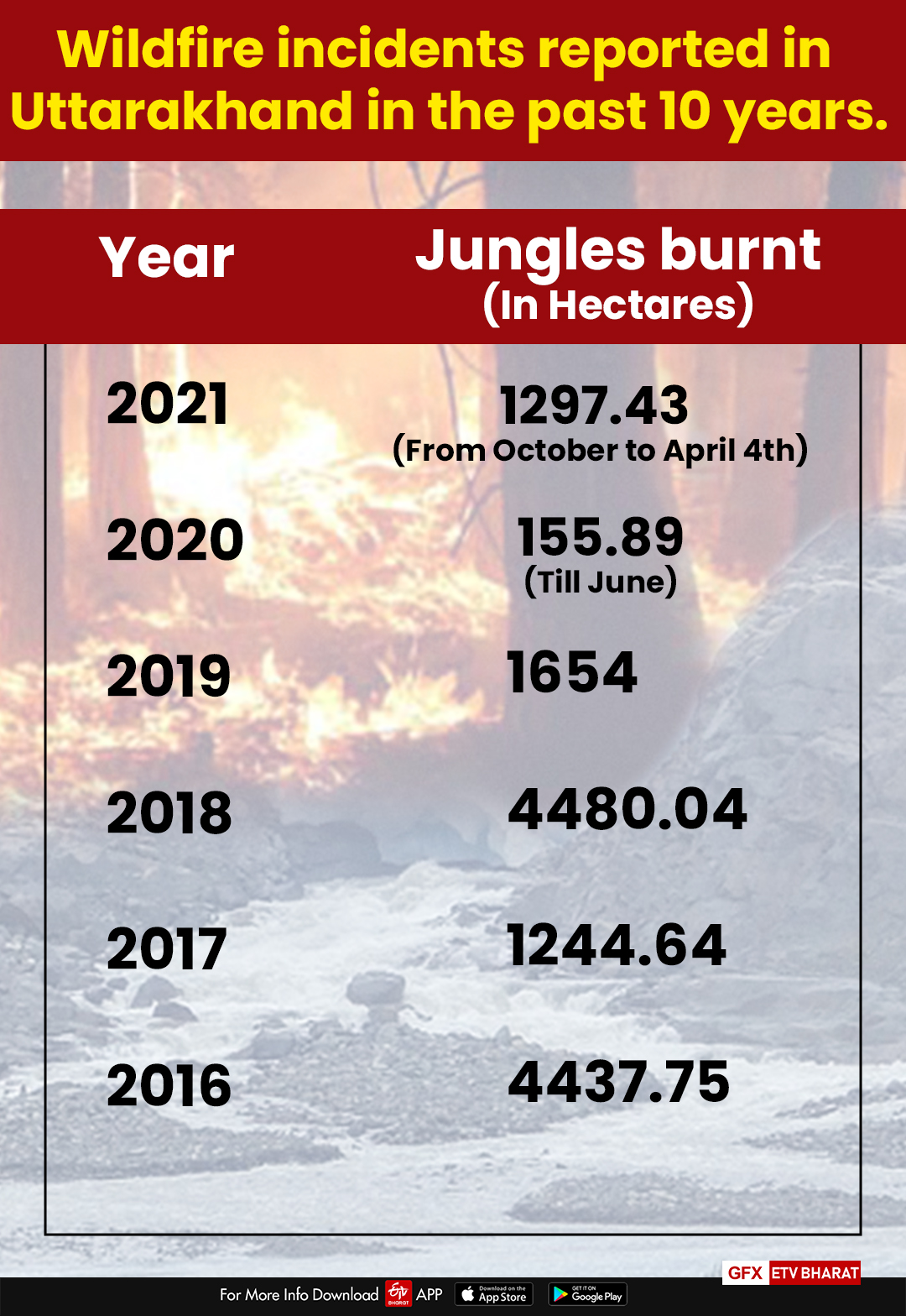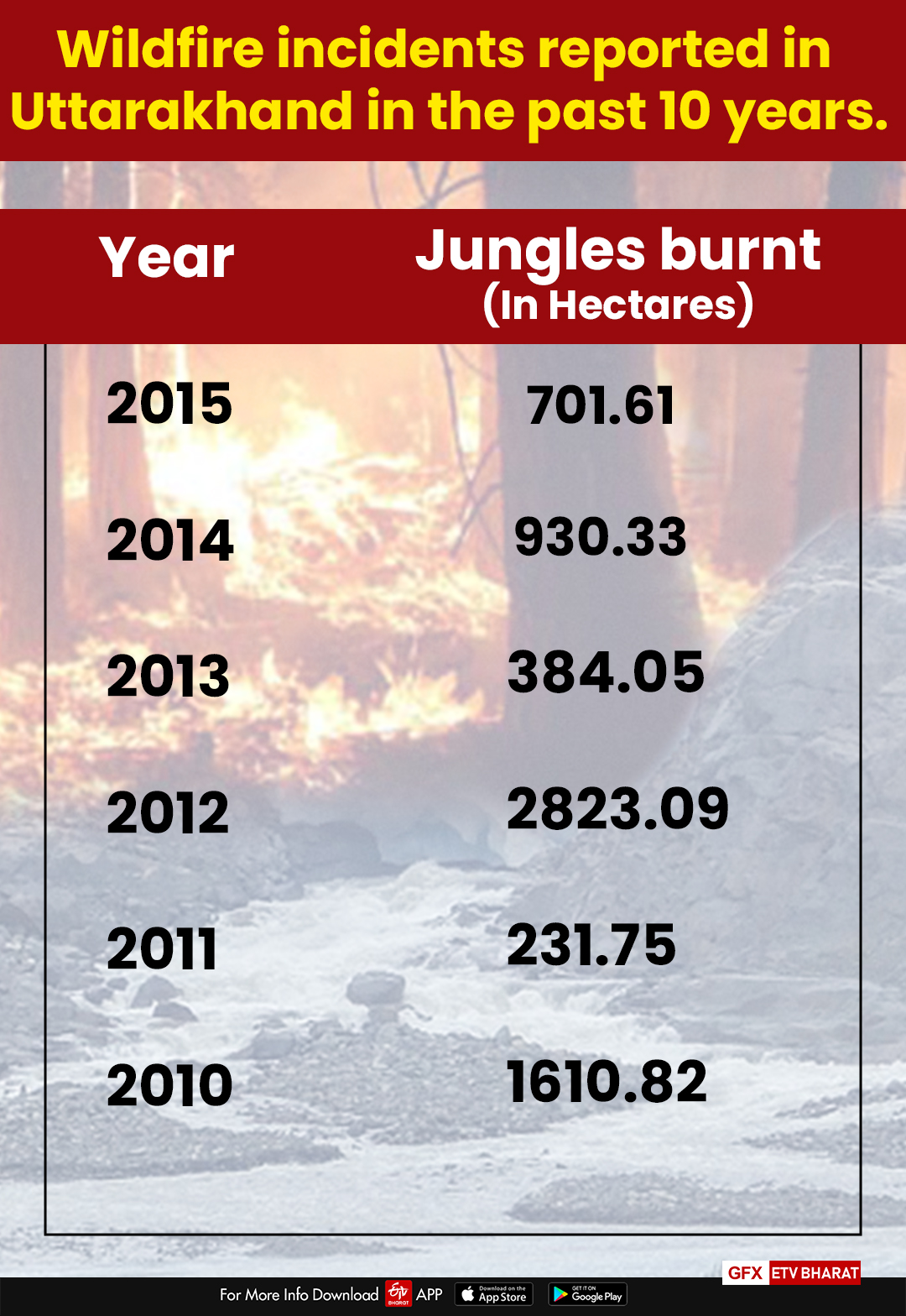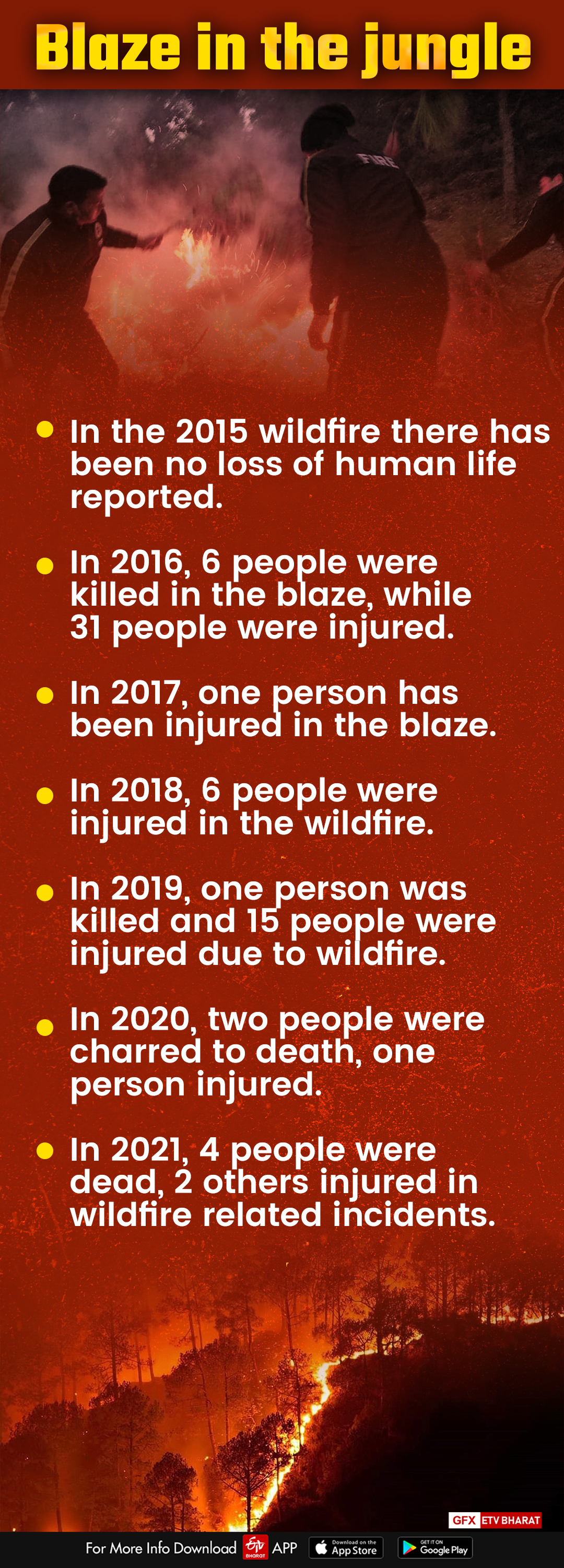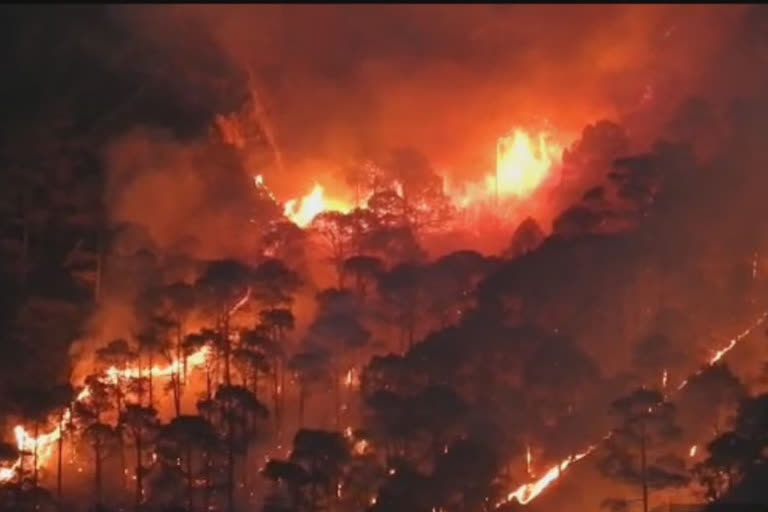Nainital/Almora: The incidents of forest fires have witnessed a rise in the mountainous region of Uttarakhand on a yearly basis, thereby affecting animals, trees and the environment. In addition, air pollution has also increased due to forest fires, and scientists have expressed concerns over the situation. They predict more damage to the environment and Himalayan glaciers arising due to the fog and smoke generated by the fire. Also, the wildfires in mountainous terrains have an impact even in the higher Himalayan regions.

According to scientists, the amount of carbon in the environment increases as the temperature rises due to forest fires, leading to a rise in the rate of melting of the glaciers.

Also read: Love jihad not as big a problem in U'khand as in other states: CM Rawat
C Kuniyal, a senior scientist at the GB Pant National Himalaya Environment Institute, Almora, says that forest fires have increased the amount of PM-10, PM-2.5 and black carbon. It is not only polluting the air, but it is also amplifying the rate of melting of glaciers in the Himalayan regions.

According to Kuniyal, if wildfires continue at this rate, it will definitely have an impact on the biodiversity and environment in the coming days. Not only that, the mist which spreads in the environment due to wildfires will reduce the oxygen level, thereby directly impacting human life and health.
Also read: Rains scale down Uttarakhand forest fires
At the same time, Manish Naja, a senior scientist at the Nainital Aryabhatta Observation Institute is also upset about seeing these horrific fire incidents in the Kumaon region. He says that due to the fire, the quantity of deadly gases emanating in the entire Kumaon region has increased, which is extremely dangerous for mankind including the atmosphere.
Manish added that the amount of black carbon in the atmosphere is usually 500 to 1500 nanograms. However, it has already risen to 12 thousand nanograms due to forest fires. The amount of ozone gas which is usually 40 to 50 ppbv has also increased to 115, which is extremely fatal living organisms in the Himalayas. For this reason, scientists are now keeping an eye on the rapidly increasing air pollution in the region.
Also read: Uttarakhand minister discusses Pancheshwar dam with Nepal Ambassador
It should be noted that in the last few years, the rate of fire has increased very fast in the forests of Uttarakhand, which is causing huge damage to the ecology here. Apart from this, environmentalists and experts believe that forest fires are the biggest reason for the melting of glaciers and the formation of black carbon deposits in Uttarakhand.
According to the statistics, since 2000, about 45 thousand hectares of the forest area has been damaged due to the wildfires. Forest Survey of India states that wildfires normally occur between the months of February and June in Uttarakhand, but this time in the winter season, in many areas of the Kedarnath valley, Panchachuli valley, forests were seen burning for many days.

Also read: Uttarakhand hotel staff test positive for Covid-19
Experts believe that forest fires could lead to a decline in the forests and warm up the region. Already, climate change is directly impacting the Himalayan glaciers to erode. Gangotri and Gomukh glaciers are examples of this. However, experts also believe that forest fires cause pine trees to grow well again. Once forest fire breaks out, this causes the forest waste (leaves, wood etc.) to let new grass grow, which is useful for animals. Hence, experts say that there must be control over forest fires.
Not only this, but climate change also happens due to the burning of forests. The more the forests burn, the greater the risk of accelerating climate change. This is a vicious cycle. The fire of the forests will have a direct impact on the snow and glacier of the Himalayan ranges. Due to the rising temperature, the frozen ice will melt rapidly over the years, which can have many adverse consequences in the coming future.
Also read: 130 people still missing in Uttarakhand glacial burst: Govt
The wildfires which broke out in Australia's forests is a ruthless example of climate change. At the same time, it is also a lesson for the whole world to understand how scary it would be to turn away from the environment?
This time around the if forest fires break out in the country, the situation can be uncontrollable. Usually, the peak time of wildfires is between 15 February and 15 June. This remains a matter of great concern. This time the forests are burning 4 and a half times faster than last season. However, these incidents will only increase the trouble of the state government and the forest department.



